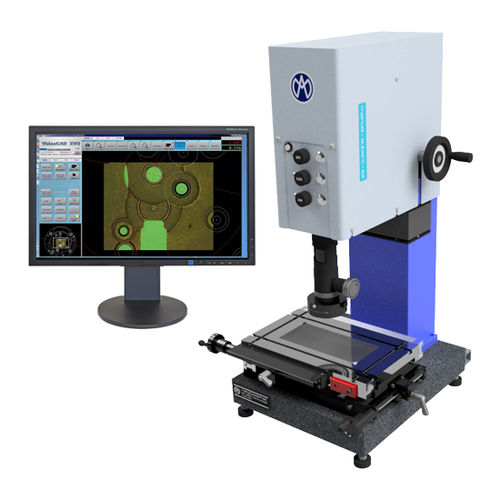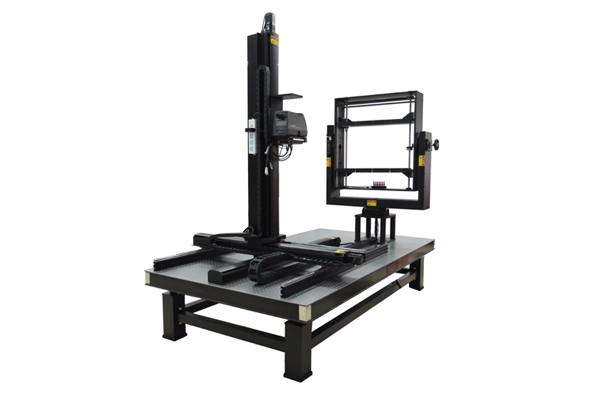The role of optical measurement systems in reducing quality control failures
The role of optical measurement systems in reducing quality control failures
Blog Article
The Role of Optical Dimension Systems ahead of time Metrology Techniques
Optical dimension systems have actually changed metrology, bringing a degree of accuracy that was as soon as unthinkable. You may be stunned to learn exactly how these technologies, based on basic principles like representation and disturbance, are applied throughout different industries. Their non-contact capabilities not only boost precision however also simplify processes. As you discover better, you'll find how these systems are shaping the future of measurement and quality control.
The Advancement of Metrology: A Historic Viewpoint
As you check out the history of assessment, you'll locate that its development reflects mankind's pursuit for precision and standardization. From old civilizations making use of body components as devices of dimension to the growth of standard weights and actions, each step shows our need for accuracy. The Egyptians constructed the pyramids utilizing accurate measurements, while the Romans progressed design with their advanced measuring tools.
During the Renaissance, clinical developments moved the emphasis toward more empirical methods, leading the means for modern-day assessment. The intro of the metric system in the late 18th century marked a significant landmark, establishing global standards. Throughout the 20th century, technological developments further changed assessment, making it possible for very exact dimensions in numerous areas.
Today, metrology remains to advance, integrating electronic innovation and automation. This background highlights not just the significance of dimension but likewise our relentless search of improving precision and uniformity in our increasingly intricate world.
Principles of Optical Measurement Solutions
Recognizing the concepts behind optical dimension systems is crucial for exact lead to width. You'll want to think about essential optical principles, dimension accuracy variables, and reliable system calibration methods. Each of these components plays an important role in ensuring your measurements are exact and reputable.
Essential Optical Principles
While discovering optical measurement systems, you'll come across essential optical principles that create the foundation of precise information purchase. Light behaves in predictable means, and understanding these habits-- like diffraction, refraction, and representation-- is important for reliable dimensions. By mastering these principles, you'll be furnished to utilize optical modern technologies effectively, paving the way for advancements in metrology and ensuring your measurements are both repeatable and dependable.
Dimension Precision Aspects
To attain high measurement precision in optical systems, several elements come right into play, affecting the reliability of your results. High-grade lenses and detectors reduce aberrations and noise, ensuring your dimensions are specific. By resolving these factors, you can improve the general efficiency of your optical measurement systems, leading to more precise and dependable results in your width applications.
System Calibration Strategies
Attaining high dimension precision is only component of the equation; proper system calibration strategies are equally important in optical dimension systems. To ensure your system provides reliable results, you ought to frequently adjust it using standard reference materials. Start by readjusting the optical elements, like lenses and mirrors, to decrease methodical errors. Next, use recognized dimensions to confirm the system's output and make needed corrections. It's also vital to make up environmental elements-- temperature level and moisture can affect dimensions. Implement a regular calibration timetable to maintain uniformity gradually. Record all calibration procedures and outcomes; this will certainly assist you track efficiency and attend to any kind of drift in precision. With these techniques, you'll boost the dependability of your optical dimension system.
Secret Technologies Behind Optical Measurement
Optical measurement systems depend on several vital modern technologies that improve precision and performance in metrology. One crucial modern technology is interferometry, which makes use of the disturbance of light waves to determine little displacements and surface area abnormalities with severe precision. You'll additionally locate laser scanning systems, which capture thorough 3D data of items swiftly, making them invaluable for dimensional analysis.
Additionally, CCD and CMOS sensing units play a significant duty in transforming light right into electric signals, permitting for high-resolution imaging and exact dimensions. Advanced algorithms for picture processing additionally boost measurement precision by analyzing data in genuine time, filtering system out sound and boosting features.
Ultimately, fiber optics provide adaptability and the ability to determine in difficult atmospheres while preserving signal stability. By leveraging these innovations, you can achieve exceptional lead to your metrology tasks, guaranteeing that your measurements are both precise and dependable.
Applications of Optical Measurement in Sector
As markets progressively demand precision and performance, the applications of optical dimension systems have become crucial across various industries. In manufacturing, these systems aid you keep an eye on measurements and resistances in real-time, making sure high quality control without taxing hand-operated checks. In the automobile sector, optical measurements help in lining up components with precision, enhancing security and efficiency.
In electronic devices, you're making use of optical techniques to inspect minute functions on motherboard, discovering defects that might result in find more info failings. The aerospace sector take advantage of non-destructive screening methods, allowing you to examine products and parts without jeopardizing their stability.
Optical measurement additionally plays a vital duty in textiles, making sure material measurements fulfill exact requirements. optical measurement systems. With their ability to provide high-resolution data swiftly, these systems empower you to make enlightened choices, enhance procedures, and eventually drive development across your industry
Enhancing Accuracy and Performance in Measurements
When you think of boosting accuracy in measurements, precision in your measurement strategies is essential. By improving these processes, you can accomplish quicker results without sacrificing quality. Let's discover exactly how taking on innovative optical dimension systems can boost both accuracy and efficiency in your job.
Precision in Dimension Strategies
Accuracy in dimension techniques is necessary for accomplishing trustworthy outcomes in width, specifically since small disparities can lead to considerable errors. By utilizing advanced optical dimension systems, you can enhance the accuracy of your dimensions. In addition, specific measurements allow you to keep quality control, guaranteeing that items satisfy stringent requirements.
Streamlining Dimension Processes
To improve accuracy and effectiveness in measurements, streamlining your dimension procedures is crucial. Begin by embracing optical measurement systems that offer real-time information, lowering the moment spent on hand-operated recording. These systems often incorporate perfectly with existing software, permitting you to automate information collection and analysis.
Next, standardize your dimension protocols. By applying constant treatments, you reduce irregularity and improve repeatability. Do not forget to regularly calibrate your tools to ensure its precision.

The Impact of Optical Measurement on R & D
As scientists endeavor to press the boundaries of technology, optical dimension systems have become crucial devices in the advancement procedure. These systems give you with precise, real-time information that enhances your capacity to assess intricate products and structures. In different areas, from biotechnology to aerospace, you count on optical measurements to boost and enhance layouts item performance.

With high-resolution imaging and non-contact approaches, you can decrease example disruption, permitting for even more accurate outcomes. This ability to capture minute information accelerates your R&D cycle, letting you repeat styles rapidly and efficiently. Optical measurement promotes collaboration across techniques, as the data produced is often conveniently interpretable and shareable.
Inevitably, integrating optical dimension systems right into your research study not just improves performance however likewise strengthens your understanding of the phenomena you study. By leveraging these sophisticated strategies, you're better equipped to innovate and stay ahead in a find out competitive landscape.
Future Patterns in Optical Measurement Solutions
With the quick innovation of modern technology, you're most likely to see significant changes in optical measurement systems that will redefine their application across various sectors. You'll see a step toward boosted automation and combination of expert system, permitting real-time information analysis and improved accuracy. Miniaturization is one more fad; portable devices will certainly enable dimensions in tighter spaces, making them optimal for areas like aerospace and biomedical applications.
Furthermore, the development of sophisticated materials, such as photonic crystals, will certainly enhance sensitivity and resolution. Expect to see systems that can operate in tough atmospheres, giving trusted dimensions in extreme conditions. Cloud-based analytics will certainly also play a vital duty, supplying you access to huge datasets for better decision-making. As these modern technologies merge, you'll discover that optical dimension systems not only boost accuracy but additionally enhance process, eventually driving technology and efficiency in your jobs.
Frequently Asked Questions
Just How Do Optical Dimension Systems Compare to Traditional Measurement Techniques?
Optical measurement systems offer higher precision and faster results contrasted to traditional strategies. You'll find they record even more data factors precisely, minimizing human mistake and raising click this link reliability, making them a favored choice in different applications.
What Industries Advantage The Majority Of From Optical Dimension Solutions?
You'll discover markets like aerospace, automobile, and electronic devices profit most from optical measurement systems. These sectors depend on specific measurements to ensure quality and efficiency, improving efficiency and minimizing expenses with advanced modern technology.

Are Optical Measurement Systems Expensive to Carry Out?
Optical measurement systems can be expensive to execute, but their accuracy and effectiveness frequently justify the cost. Buying such modern technology can result in significant lasting savings and enhancements in high quality across different applications.
What Abilities Are Required to Run Optical Dimension Systems?
To run optical dimension systems, you'll need strong analytical skills, attention to information, and proficiency in software application devices. Knowledge with optics and an understanding of measurement concepts will additionally improve your efficiency and performance.
How Do Ecological Variables Impact Optical Measurements?
Ecological aspects like temperature level, moisture, and air top quality can distort optical measurements. You'll discover variations in precision as a result of light interference or refraction. optical measurement systems. Maintaining steady conditions is essential for trustworthy and precise optical measurement outcomes
Final thought
In summary, optical dimension systems are transforming metrology by supplying unmatched accuracy and performance. As you check out future fads, you'll see exactly how the assimilation of AI and automation will continue to boost dimension techniques, driving advancement and improving high quality control.
Achieving high measurement accuracy is just part of the equation; correct system calibration strategies are similarly crucial in optical dimension systems.When you assume concerning improving accuracy in measurements, precision in your dimension techniques is important. By utilizing innovative optical dimension systems, you can boost the precision of your dimensions.To enhance precision and efficiency in dimensions, simplifying your dimension procedures is vital. How Do Optical Dimension Systems Contrast to Traditional Measurement Techniques?
Report this page